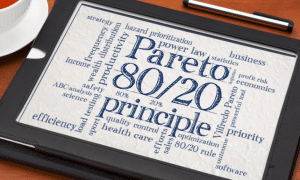How to Develop a High Performance Sales Team …
Every company yearns for a high performing sales team. And to get one, certain key factors need to be in place. This post outlines what they are. The one item that is critically important to building a high performing sales team that is not addressed in this article is recruitment. There is another post that discusses recruiting GREAT People. You can access it HERE.
Now for the juice – The key components in developing your high performance sales team are:
- Culture
- Roles and Expectations
- Compensation
- Goals and Action Plan
- Measurement and Feedback
- Training and Development
- Culture
The best culture is one that combines a team spirit and a healthy competition to drive growth. Growth from both a sales perspective and a personal development perspective. The role of the sales manager here is key.
The Sales Manager must build and maintain the culture through how they run sales meetings, coach and recruit their sales people and how they bring accountability to the team. For a great resource on building a sales culture, read Jack Daly’s ‘Hyper Sales Growth’. This is so important that he dedicates the first half of the book to it!
- Roles and Expectations.
The two key outcomes a sales person needs to achieve is new client acquisition and nurturing existing clients to maximise client retention. It is important to have benchmarks in place that help a sales person be clear on what is expected of them in each area. Ideally, their compensation package should be tied to the same benchmarks.
That said, compensation should not be the driving force behind a sales persons behavior but it must be aligned with the outcomes you are looking for. It is common for salespeople to be more motivated by financial compensation than other roles within an organization so it is important but it is only 1 point out of 6 in creating a high performance team.
- Compensation
As mentioned above, a salesperson’s compensation should be aligned with the behavior you want them to display. If a certain role is pivotal to new business acquisition, then commissions should be heavily weighted that way. If client retention is more important, then the same should be true for that metric. Of course in many cases a balance is necessary, so naturally the compensation package should reflect that. Sometimes, it’s not easy to tie compensation directly to one or the other so non-compensation metrics should be used in these cases. See – Roles and Expectations above.
Your decision on how to balance between salary and commission will have a bearing on the types of people you attract and their subsequent performance. I believe a compensation package highly geared towards commission, rewards the outcome you are looking for in sales people.
At the end of the day, the only reason to employ sales people is to make sales. So why would you tie their compensation to anything else? People should be remunerated for the value they bring to the company. And for sales people, it is very clear on how much value they bring … it is their sales.
Knowing your numbers here is key. For example, how are costs allocated through the business model so the company makes the required level of profit?
Here is an example.
| COGS – Materials | 10% |
| COGS – Direct Labour (including sales) | 45% |
| Overheads Expenses | 30% |
| Profit. | 15% |
If this was your business model, and you new that direct labour was 35% then you can pay up to 10% on sales commissions. If however you had a model that had a portion of base salary for sales then that would need to be accounted for in the overhead expenses. Either way you slice it, it needs to add up on the bottom line.
Of course the numbers don’t always present as neat like I’ve presented above, but you do need to understand your model to be able to put the right plan in place. If you overpay for sales, you’ll lack the cash flow to grow – or worst go bankrupt – and if you underpay, well you’ll never get the high performers you seek. It is very important that your high performing sales people can earn lots of money and still have the company grow profitably.
A sliding scale can be a useful tool. What this means is there may be a base level of sales that pays a certain percentage. Then the next tier of sales pays a little higher. Then the next level pays higher still … and so on. In this arrangement you know your profit is covered in the lower levels but the higher levels bring a bonus to the company so subsequently you can pay more out too. It becomes an aligned incentive for both the company and the sales person. Here’s an example below
| Gross Profit Levels | Commission Rate | Total Earnable (including levels below) |
| $0 – $500,000 | 10% | $50,000 |
| $500,000 – $1,000,000 | 12% | $110,000 |
| $1,000,000 – $1,500,000 | 14% | $180,000 |
| > $1,500,000 | 18% | $270,000 + |
In this example, your expectation might be that a sales person should be bringing in at least $1,000,000 in Gross Profit. And you know as long as they do, your profit goals will be achieved. If a salesperson falls below this target, that becomes a performance and coaching issue … not a compensation model issue. And once they are above the $1MM mark, they get rewarded more and more. This can provide a very powerful incentive, so long as the targets are seen as achievable. They may not be easy, but for a committed sales person who is willing to work hard, they should be able to hit it.
One final point on compensation, it is important to link compensation to things that drive the companies growth and are in control of the individual. Therefore carefully consider whether it is sales or gross profit that is the metric to calculate commissions. I think Gross Profit is a better measure. It ensures your sales people aren’t discounting to get volume and you are paying commissions you can afford.
- Goals and Action Plan
Each sales person should have a goal they are striving for. As noted by the points on compensation, this also helps them be clear on what the financial reward will be for them. It is important that sales goals are developed with each sales person individually. Someone with 2 years experience and limited contacts can’t be expected to achieve the same as someone who has 10yrs of high performance history.
It is important each sales person is responsible for developing their own goals. Obviously you will work with them but they must own it. The goal must stretch the individual, provide for them financially and be aligned with the companies goals. It is no good having your team with sales targets they are happy with but leaves the company 30% short of its break even!
Once sales goals (note: they are sales goals not sales targets. Sales targets generally invoke a feeling of fear vs a feeling of challenge. Any sales environment that is driven on fear is always going to be outperformed by one that is driven by challenge and growth) have been developed and taken ownership of, now each sales person needs to develop a plan that will enable them to achieve their goal.
A plan will be made up of a Critical Activity Calendar (CAC). A critical activity is an activity that contributes toward a sale being made and is within 100% control of the sales person. (i.e. networking event, asking for a referral, sales call, blog post or presenting a quote.) Each sales person must be clear on what critical activities are in their arsenal and how many of each is going to be required to achieve their goal. This is a rarely known quantity the first time you sit down to create one. A lot is learned over time. So when in doubt, stack the deck in your favor and plan for MASSIVE action 🙂
Execution of the critical activity calendar is not a guarantee that the goal will be achieved – but nothing is. Within the world of sales, we cannot control the outcome, only the activities that lead to the desired outcome. The factors that affect the outcome are the level and quality of the activity. The starting point for achievement of the sales goal is clear identification of the level of activity required over a specified period.
It can also helpful to look at the Sales GAP formula. The Sales GAP formula simply looks at – if nothing changed (i.e. no new activity was done over the next period) what level of sales could we expect? This is the Business As Usual (BAU) sales forecast. Next we subtract our BAU sales level from our Sales Goal to arrive at our Sales GAP.
E.g:
| Sales Goal | BAU | Sales GAP |
| $2,000,000 | $1,450,000 | $550,000 |
We can then take a look at what has to happen to achieve BAU (e.g. reminder calls to existing clients) and what the CAC needs to look like to bridge the Sales GAP. This is the basis of a simple Sales Plan for each of your sales team.
- Measurement and Feedback
Once the goal and CAC have been established, it needs to be tracked and reported on. The most important part of making this happen is helping each sales person to discover the benefit to them of tracking. Most sales people as a general rule will hate measuring activity. It will seem like a waste of time and will be a ‘get off my back’ kind of topic.
Some simple coaching like “what would be your advice to someone who said they wanted to lose 10 kilos?” They may answer, “eat better food and exercise more”. You may follow up with “how would you advise them to be consistent with that?” or “What are their best ways to make sure they do that?” You want to lead them into the understanding we can be our own worst saboteurs. Someone looking to lose 10 kilos has a tendency to forget about the donut that passed through their lips at 9:30am when you ask them at 4pm what they ate that day. The same goes for sales people. If you asked them to recall how many sales calls they made in a day, they would say “lots” – when the truth may in fact be three. You want them to acknowledge that if they let themselves off the hook, they won’t achieve their desired financial reward.
“What get’s measured gets managed” – Peter Drucker
Help them to take ownership of this task. If they see you as big sister/brother who is looking at it every week and giving them a slap on the wrist if they didn’t do enough, pretty soon you won’t be seeing the real numbers.
This point links very closely with the next point “Training and Development”. The whole point of measuring data is so they can start to pin point the obstacles that are preventing them from achieve their goal. It is not just about you and the company.
People who are authentic and are in the right environment will want to improve. Everyone at his or her core does. The challenge can be that when we are put under the microscope we can start to feel vulnerable and will lean towards being defensive or not telling the truth. To prevent that from happening, your sales people need to feel you genuinely want to help him or her and you are not judging them. They will judge themselves enough … you don’t need to pile on top. Your role is to help them discover the opportunities to get better.
The best catalyst for putting the issues on the table is always the actual sales results. If the results aren’t there, there is something to discuss. Your biggest challenge as a sales manager will be to bring down the barriers that prohibit candid discussion. Your willingness to be vulnerable, trusting and authentic will be key here. Some good reading is Patrick Lencioni’s “5 Dysfunctions of a Team”. While this book is not sales centric, it does give some great insights on how communication can be enhanced through trust and vulnerability.
- Training and Development.
The level of activity can be guided and measure through the points we’ve discuss above, but the quality of the activity can only be improved through training and development. While all the points discussed to date are essential, it is perhaps this last point that yields the biggest payoffs in the long term.
Big pay offs for two key reasons. The first may be obvious – if you make your sales people better, they make more sales and your company prospers. The second less obvious point is the goodwill and loyalty you build within your people which has massive intangible effects. One of the biggest concerns to a company is that their top performing salesperson will defect and go to the competition or leave them and start a competing company. The only way I know of combating this real threat is to create so much goodwill within a person they could not bring themselves to do it to you. This might sound like a hope and prayer kind of strategy, but there is much evidence it works.
In Malcom Gladwell’s book “Blink” studies showed that the doctors who were most likely to be sued were not those who made mistakes but those who spent less time with their patients or had poor bedside manner. Doctors who built more relationship and goodwill were not sued. People don’t want to hurt those they care about.
Developing your people and improving their quality of life pays dividends in ways that can’t be measured. When people develop their skills and results, their self-confidence increases, they walk taller and bring a more positive impact to your business.
So how do you train and develop your sales team? Here a short list:
- Seminars
- In house training
- Regular sales meetings focused on development
- Reading books (have a library at your business – have a sales book of the month)
- Online videos (YouTube, Jeffrey Gitomer’s Virtual Training – search my blog for Gitomer VT)
- Case study review (successes and failures)
- Current situation brainstorming – difficult client situations
- Best practice sharing – identify sales people who excel in certain areas and get them to run a group training on how they do it.
- Develop your own in house video and audio library.
- Role playing
- Daily motivation nugget
I think it is essential that sales people are getting some mental nutrition every day that puts them in the right state and builds their skill set and mind set. It is your job as the sales manager to give them access to these resources.
Summary
It can take some time to have all this in place. And that’s OK. What might be most important is the constant and clear communication of what you are building. Let your people know where you want to take the sales team, look for their input and enable them to help with the journey. It is a team effort – you are just there to serve and enable them to become better.




